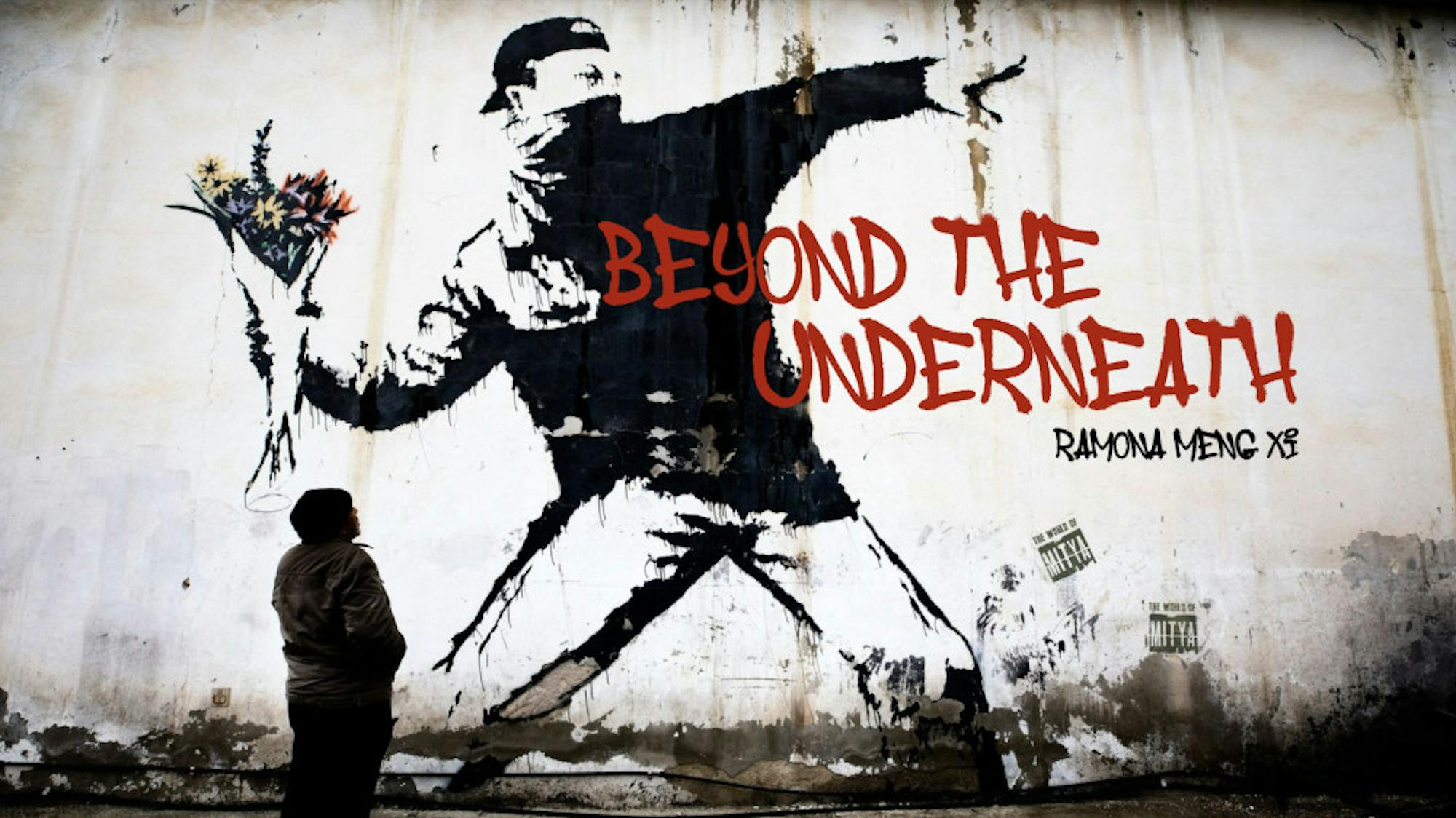It was a few months ago when I asked the manager of an underground club about the "signing up" process to DJ at the club. She told me people could start off by DJing at a bar. She said the bar's name under the music. I couldn't really catch the name — it was something like "Sis," "Synth" or "Sees."
Eventually, she typed out the name on her phone after my confused look. My guesses were entirely wrong. It's called"C's."
"They are really open in terms of welcoming new DJs to perform," she said. "But their sound system is quite outdated."
The location of this bar is also as confusing as its name. Next to a farmer's market, you will finally see a dim, round sign that indicates the bar's direction. You then have to walk into a lightless narrow path, and you will faintly hear the beats. Finally, an entrance with light and a staircase leads you toward the underground. The staircase takes a few turns. Along the way, you can see sporadic graffiti and random drawings, including the big graffitied "C's."
I felt I had just entered another world. There are no blank walls, but every bit of surface isfilled with graffiti, drawings, words, neon paints, stickers and posters. I spent most of my time scrutinizing the wall. The wall art ranges from "I love you" to "Media is not Good," and there are lots of hidden ones. Each embodies a certain memory or emotion. When they are piled together, they construct a world that forms a sharp contrast to the above-ground world. Just like its very open music policy, anyone can write and draw on the wall. Unlike theGraffiti Street, where doing graffiti is like occupying and defending a territory for as long as possible, here you are just contributing to an artwork as a whole.
The place is also much bigger than I imagined. It's not just a single room but almost a maze. The hallway connects several rooms together. From roaming in and out of rooms, looking at the style of the arches and the bricks on the wall, I was drawn to its structure. It's like a part of a bigger picture.
When I met the club manager again, she told me C's is located in a bomb shelter built during World War II. In fact, many bomb shelters in Shanghai have now beentransformed into hip or non-mainstream places, like wine shops, recording studios, album shops and men's underwear stores, for example.
The transition from the role these shelters played decades ago, serving as lifesavers in an environment of horror, to their current role as “chill” places to hangout, is drastic. What hasn't changed is the idea of escapism from the ground above. Bold words, candid phrases, expressive drawings, hasty doodles, dancing and smiling people. It is indeed another world with slightly fewer rules and judgments. You let go of part of your pretense.
The first person I chatted with at C's pointed toward the speaker and told me they changed it to a new one.
"But the vibe never changes," I told him.






